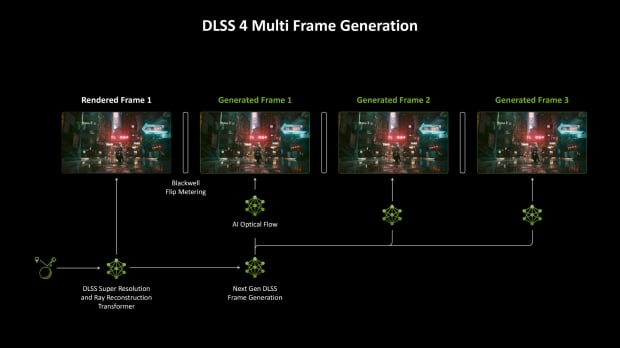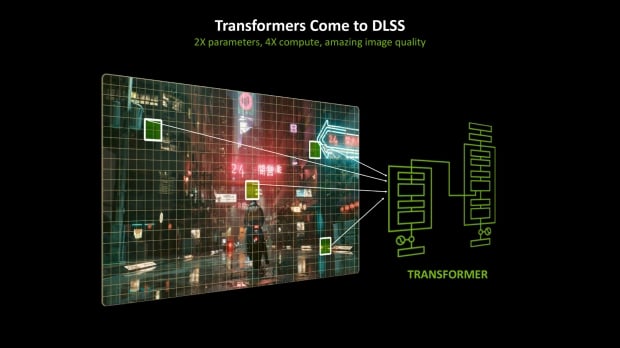With the GeForce RTX 50 Series set to launch later this month with the new flagship GeForce RTX 5090 and RTX 5080, one of the significant features for PC gamers coming with the new Blackwell generation is DLSS 4 Multi Frame Generation. Compared to the DLSS 3 Frame Generation, the new DLSS 4 version, exclusive to the RTX 50 Series, introduces an updated AI model and hardware that can generate up to three frames instead of one.

VIEW GALLERY – 8 IMAGES
With the new Blackwell ‘Flip Metering’ technology, DLSS 4 Multi Frame Generation can generate more frames with consistent frame pacing and virtually no additional latency. During a live demonstration of the technology at NVIDIA’s Editor’s Day at CES 2025, running on a preview build of Cyberpunk 2077, each additional generated frame only added 1-2ms of latency. The latency is essentially the same when stacked against the original DLSS Frame Generation.
This is how the GeForce RTX 5090 can achieve 240+ FPS in games with full Path Tracing, which is a remarkable result because it’s roughly an 8X increase over native rendering. However, the AI-generated frames are imperfect because there are ‘blink and you’ll miss it’ artifacts, so those who love tinkering with settings can choose how many AI-generated frames are rendered.

The idea is that DLSS Multi Frame Generation, with NVIDIA Reflex and G-Sync support, is for gamers who want to ‘max out’ their display’s refresh rate – in addition to being tailor-made for Path Tracing. I’ve got MSI’s brilliant MAG 321UPX QD-OLED 4K 240Hz display, so generating three frames to hit 240 FPS makes sense. However, if you’ve got a 4K 144Hz display, limiting the additional frames of the DLSS 4 Multi Frame Generation to two makes more sense.
These controls will be added in-game to the display and graphics settings section where DLSS controls are kept. In Cyberpunk 2077, you’ve got the option of 2X, 3X, and 4X for DLSS Multi Frame Generation (which counts the native or DLSS Super Resolution rendered frame).

With DLSS 4, in-game settings are now more detailed to cover the new Transformer model and Multi Frame Generation.
What makes this even more exciting is that DLSS 4 upgrades and overhauls all aspects of the AI-powered technology.
With the new ‘Transformer’ model, which has double the parameters and four times the computing power, DLSS Super Resolution and Ray Reconstruction image quality has been noticeably improved compared to DLSS 3.5 – and is available for all GeForce RTX 20, 30, and 40 Series owners. DLSS 4’s revamped Frame Generation will also work on all GeForce RTX 40 Series cards, upgraded to deliver notable performance gains with lower VRAM usage. Albeit limited to a single AI-generated frame.

RTX Blackwell is bringing significant improvements to its Tensor Cores while integrating AI workloads for games into the rendering pipeline like never before, so naturally, all of this will run faster on the GeForce RTX 50 Series.